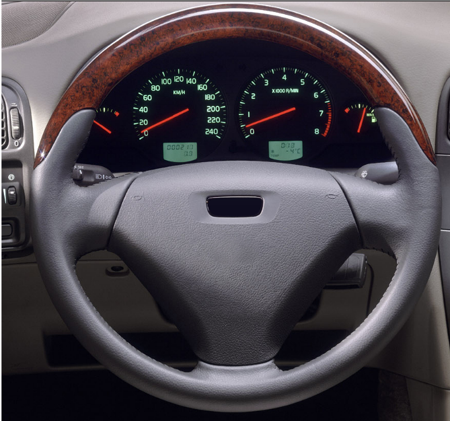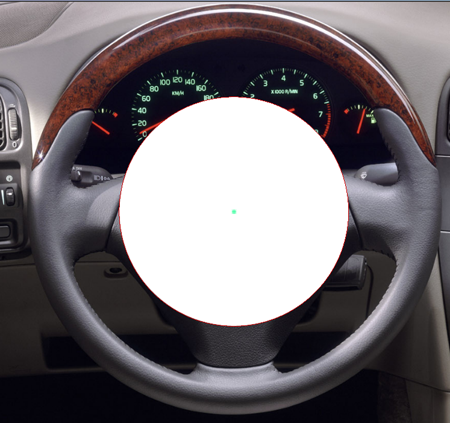Use invisibility mask shapes to change the display opacity of an area of an image layer in much the same way as a hide brush.
First we present the general workflow, followed by an example.
To create an invisibility mask from curves
 ❒ from the palette.
❒ from the palette.
The curve becomes an invisibility mask. By default, the outline is turned off, and the fill area, which acts as the invisibility mask, is outside the curves.
The Shape Editor lets you modify several parameters of the Shape such as color, opacity, and so on.
For a description of each option, see Windows > Editors > Shape Editor.
To create certain shapes, you may need to select the curves that define the shape in more than one location. Simply select each curve segment that forms a boundary of the shape region, even if you must select the same curve more than once. See Create a shape for more details.
In this example we will use a circle to hide the entire image layer except the steering wheel.
Here we use the options from the Paint Panel, but the Shape Editor could be used as well.
 to import the image you wish to edit, or paint on a layer. The image layer is automatically selected.
to import the image you wish to edit, or paint on a layer. The image layer is automatically selected.
See Import an image as an image layer


 tool from the palette, then select the circle and accept the shape. Note how the image has completely disappeared inside
the curve.
tool from the palette, then select the circle and accept the shape. Note how the image has completely disappeared inside
the curve. 


This technique provides a very fast and flexible way of hiding pixels from view and has major advantages over deleting part of an image layer. At any point, the curves can be repositioned and the layer will update to hide or show part of the image.

Invisibility mask shapes offer the same capabilities as paint shapes. Any number of curves can be used to create a shape; the shape can include holes and the fill colour can be any texture or outline. (See RGB Color option in the Paint Panel.)

The image above was created using three curves and an invisibility mask layer where the fill texture was a gray scale ramp that provides semi-transparent pixels.